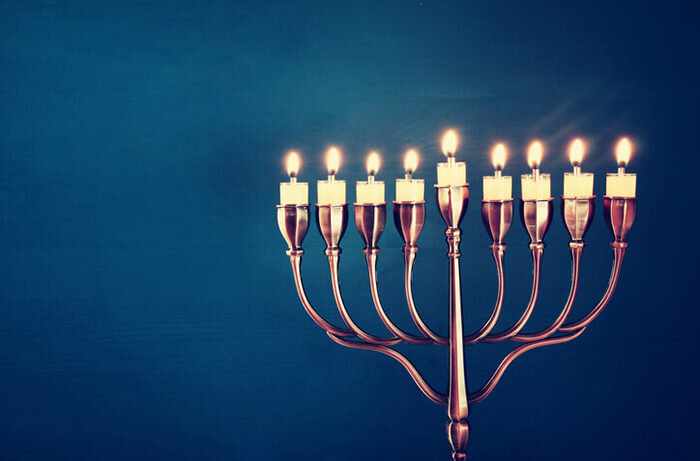A Light In the Darkness / Una Luz En La Oscuridad
Hanukkah begins this week. For many Jews, like my family, the eight nights of Hanukkah are not the most important of the year. That distinction is reserved for the Rosh Hashanah—the Jewish New Year, and Yom Kippur—the day of atonement, which take place around the autumnal equinox. My family is rarely together on Hanukkah unless it happens to land on Thanksgiving or Christmas, when everyone is off of school and work (fun fact: Jewish holidays operate on the lunar Hebrew calendar, which has a leap month).
The main tradition of Hanukkah is to light candles on the menorah, one light for each night. It is called the festival of lights, after all! Hanukkah, like Christmas, the winter solstice, and New Years Eve are all about finding light and joy in the darkest days of the year. Whether you light candles in your home and place them in the window for neighbors to enjoy, string up a holiday light display in your yard, roof or balcony, or light up your Christmas tree, you are sending light out in the darkness.
Every year the days get shorter and darker as we get closer to the winter solstice. This year is especially dark. After one of the strangest and hardest years in recent memory for many, we are back in lockdown trying to keep ourselves and our neighbors safe. For many this month, there won’t be weekly celebrations with drinking, food and dancing. Many will have empty chairs at their table, of loved ones lost or sick. But what Hanukkah and other winter solstice traditions show us is that even in the darkest of times, there is light. Walk or drive around your neighborhood enjoying holiday lights, watch a virtual tree lighting online, or simply light a candle in your window. However you celebrate, here’s to finding the joy and light this year.
Happy Hanukkah.
Hanukkah comienza esta semana. Para muchos judíos, como mi familia, las ocho noches de Hanukkah no son las más importantes del año. Esa distinción está reservada para Rosh Hashaná, el Año Nuevo judío y Yom Kipur, el día de la expiación, que occure en la misma temporada del equinoccio de otoño. Mi familia se junta raramente en Hanukkah a menos que ocurra en el de Día Acción de Gracias o Navidad, cuando todos están fuera de la escuela y el trabajo (dato curioso: las fiestas judías operan en el calendario lunar hebreo, que tiene un mes bisiesto).
La principal tradición de Hanukkah es encender velas en la menorá, una luz para cada noche. ¡Después de todo, se llama el festival de las luces! Hanukkah, como Navidad, el solsticio de invierno y la víspera de Año Nuevo, se trata de encontrar luz y alegría en los días más oscuros del año. Ya sea que encienda velas en su casa y las coloque en la ventana para que los vecinos las disfruten, coloque una exhibición de luces navideñas en su patio, techo o balcón, o ilumine su árbol de Navidad, está enviando luz en la oscuridad.
Cada año, los días se vuelven más cortos y oscuros a medida que nos acercamos al solsticio de invierno. Este año fue especialmente oscuro. Después de uno de los años más extraños y difíciles en la memoria reciente para muchos, estamos nuevamente encerrados tratando de mantenernos a nosotros mismos y a nuestros vecinos a salvo. Para muchos este mes, no habrá celebraciones semanales con bebidas, comida y baile. Muchos tendrán sillas vacías en su mesa, de seres queridos perdidos o enfermos. Pero lo que nos muestran Hanukkah y otras tradiciones del solsticio de invierno es que incluso en los momentos más oscuros, hay luz. Camina o conduce por tu vecindario disfrutando de las luces navideñas, observa la iluminación de un árbol de Navidad virtual en línea o simplemente enciende una vela en tu ventana. No importa cómo celebres, aquí está la alegría y la luz de este año.
Feliz Hanukkah.

